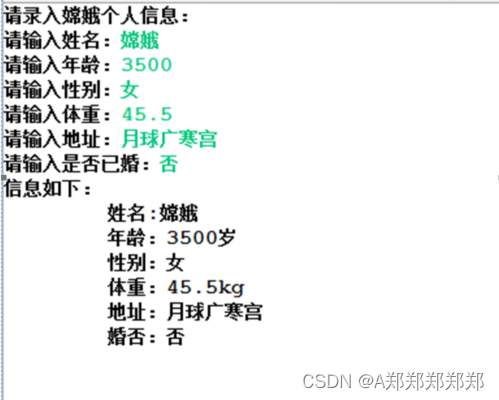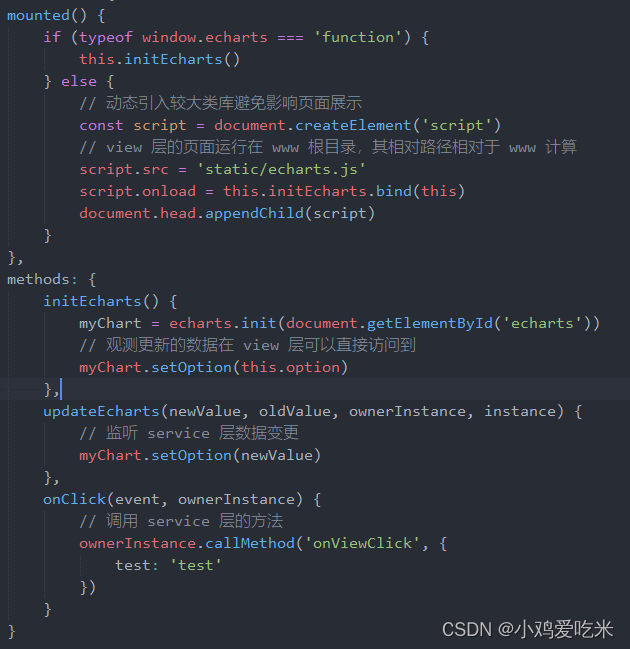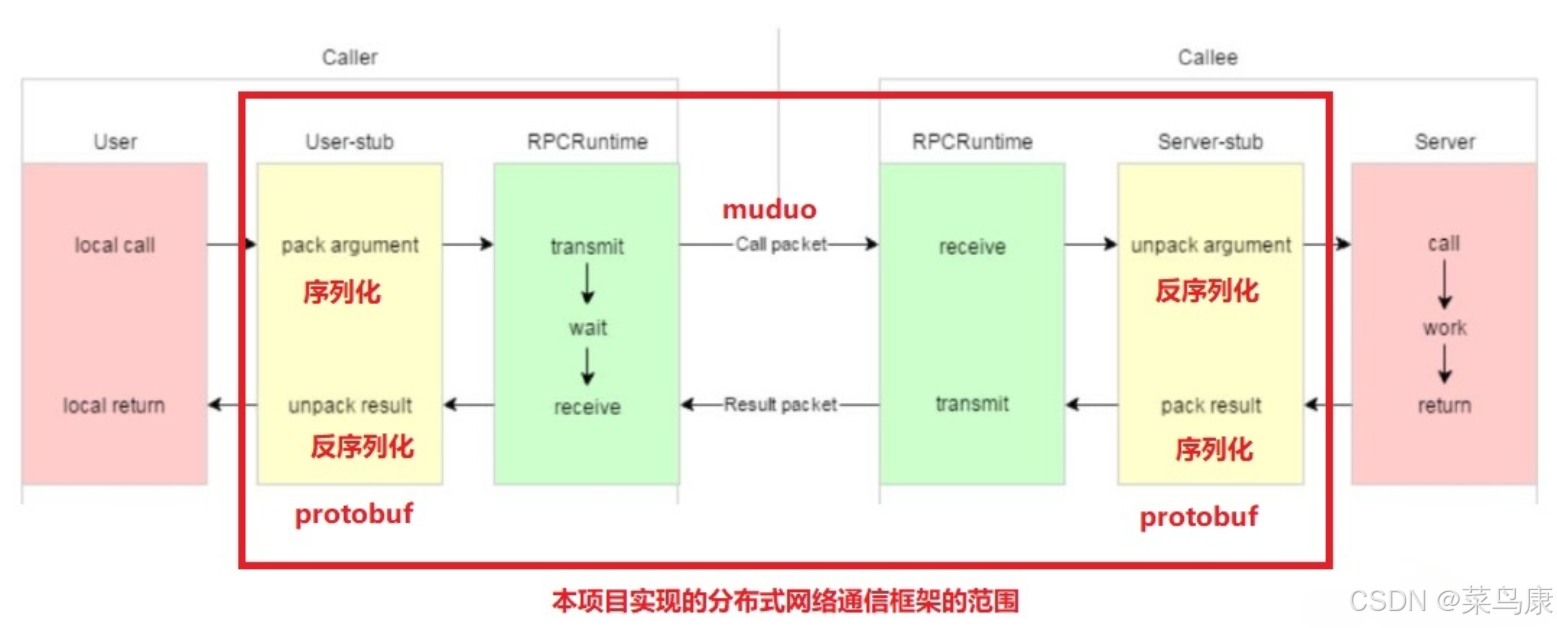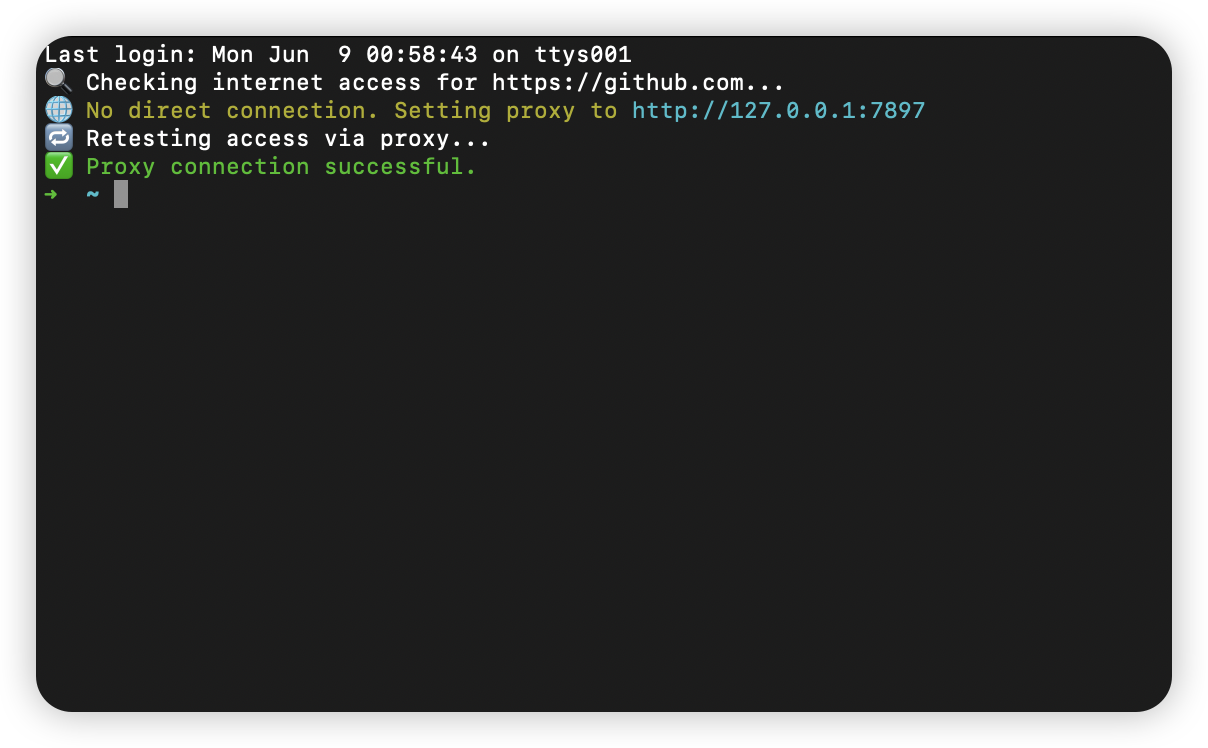STL常用算法-C++
概述:
- 算法主要是由头文件
<algorithm><functional><numeric>组成。 <algorithm>是所有 STL 头文件中最大的一个,范围涉及是比较、交换、查找、遍历操作、复制、修改等等。<functional>定义了一些模板类,用以声明函数对象<numeric>体积很小,只包括几个在序列上面进行简单数学运算的模板函数
1. 常用的遍历算法
学习目标:
- 掌握常用的遍历算法
算法简介:
for_each// 遍历容器transform// 搬运容器到另一个容器中
1.1 for_each
功能描述:
- 实现遍历容器
函数原型:
- for_each(iterator beg, iterator end, _func);
// 遍历算法 遍历容器元素
// beg 开始迭代器
// end 结束迭代器
// _func 函数或者函数对象
示例:
#include <iostream>
#include <vector>
#include <algorithm>
using namespace std;//1.普通函数
void print01(int val) {cout << val << " ";
}//2.仿函数
class print02
{
public:void operator()(int val) {cout << val << " ";}
};int main() {vector<int> v;for (int i = 0; i < 10; i++) {v.push_back(i);}for_each(v.begin(), v.end(), print01);//普通函数cout << endl;for_each(v.begin(), v.end(), print02());//仿函数的函数对象cout << endl;return 0;
}
总结:for_each 在实际开发中是最常用的遍历算法,需要熟练掌握
1.2 transform
功能描述:
- 搬运容器到另一个容器中
函数原型:
- transform(iterator beg1, iterator end1, iterator beg2, _func);
// beg1 源容器开始迭代器
// end1 源容器结束迭代器
// beg2 目标容器开始迭代器
// _func 函数或者函数对象(可以在搬运过程中对源容器中的元素做一些逻辑运算等操作)
示例:
#include <iostream>
#include <vector>
#include <algorithm>
using namespace std;//仿函数
class Transform
{
public:int operator()(int val) {//搬运过程中需要把元素返回回去,所以返回类型为搬运的元素类型return val;}
};class MyPrint
{
public:void operator()(int val) {cout << val << " ";}
};int main() {vector<int> v;for (int i = 0; i < 10; i++) {v.push_back(i);}vector<int> vTarget;vTarget.resize(v.size());//目标容器需要提前开辟预定大小的空间transform(v.begin(), v.end(), vTarget.begin(), Transform());for_each(vTarget.begin(), vTarget.end(), MyPrint());cout << endl;return 0;
}
总结:
- 搬运的目标容器必须要提前开辟预定大小的空间,否则无法正常搬运
- 搬运过程中需要把元素返回回去,所以仿函数的返回类型为 搬运的元素的类型
2. 常用查找算法
学习目标:
- 掌握常用的查找算法
算法简介:
- find // 查找元素
- find_if // 按条件查找元素
- adjacent_find // 查找相邻重复元素
- binary_search // 二分查找法
- count // 统计元素个数
- count_if // 按条件统计元素个数
2.1 find
功能描述:
- 查找指定元素,找到返回指定元素的迭代器,找不到返回结束迭代器(end)
函数原型:
- find(iterator beg, iterator end, value);
// 以迭代器的方式按值查找元素,找到返回指定位置迭代器,找不到返回结束迭代器位置
// beg 开始迭代器
// end 结束迭代器
// value 查找的元素
示例:
#include <iostream>
#include <vector>
#include <algorithm>
using namespace std;class Person {
public:Person(string name, int age) {this->name = name;this->age = age;}bool operator==(const Person& p) {if (this->name == p.name && this->age == p.age) {return true;} else {return false;}}public:string name;int age;
};int main() {
//查找内置数据类型vector<int> v;for (int i = 0; i < 10; i++) {v.push_back(i);}vector<int>::iterator it = find(v.begin(), v.end(), 5);if (it == v.end()) {cout << "没有找到!" << endl;}else {cout << "找到:" << *it << endl;}//查找自定义数据类型vector<Person> vp;Person p1("aaa", 10);Person p2("bbb", 20);Person p3("ccc", 30);Person p4("ddd", 40);vp.push_back(p1);vp.push_back(p2);vp.push_back(p3);vp.push_back(p4);Person pp("bbb", 20);//当使用 find 查找自定义数据类型时,要在自定义数据类型内部重载 == 运算符,让底层 find 知道如何对比自定义数据类型vector<Person>::iterator it = find(vp.begin(), vp.end(), pp);if (it == vp.end()) {cout << "没有找到" << endl;}else {cout << "找到:" << it->name << " " << it.age << endl;}return 0;
}
总结:
- 利用 find 可以在容器中找指定的元素,返回值是迭代器
- 当使用 find 查找自定义数据类型时,要在自定义数据类型内部重载 == 运算符,让底层 find 知道如何对比自定义数据类型
2.2 find_if
功能描述:
- 按条件查找元素
函数原型:
- find_if(iterator beg, iterator end, _Pred);
// 按值查找元素,找到返回指定元素迭代器位置,找不到返回结束迭代器位置
// beg 开始迭代器
// end 结束迭代器
// _Pred 函数或者谓词(返回 bool 类型的仿函数)
示例:
#include <iostream>
#include <vector>
#include <algorithm>
using namespace std;//内置数据类型仿函数
class GreaterFive
{
public:bool operator()(int val) {return val > 5;}
};class Person {
public:Person(string name, int age) {this->name = name;this->age = age;}bool operator==(const Person& p) {if (this->name == p.name && this->age == p.age) {return true;} else {return false;}}public:string name;int age;
};//自定义数据类型仿函数
class Greater20
{
public:bool operator()(Person& p) {return p.age > 20;}
};int main() {
//查找内置数据类型vector<int> v;for (int i = 0; i < 10; i++) {v.push_back(i);}vector<int>::iterator it = find_if(v.begin(), v.end(), GreaterFive());if (it == v.end()) {cout << "没有找到!" << endl;}else {cout << "找到大于 5 的数字为:" << *it << endl;}//查找自定义数据类型vector<Person> vp;Person p1("aaa", 10);Person p2("bbb", 20);Person p3("ccc", 30);Person p4("ddd", 40);vp.push_back(p1);vp.push_back(p2);vp.push_back(p3);vp.push_back(p4);Person pp("bbb", 20);vector<Person>::iterator it = find(vp.begin(), vp.end(), Greater20());if (it == vp.end()) {cout << "没有找到" << endl;}else {cout << "找到:" << it->name << " " << it.age << endl;}return 0;
}
2.3 adjacent_find
功能描述:
- 查找相邻重复元素
函数原型:
- adjacent_find(iterator beg, iterator end);
// 查找相邻重复元素,返回相邻元素的第一个位置的迭代器;找不到返回结束迭代器位置。
// beg 开始迭代器
// end 结束迭代器
示例:
#include <iostream>
#include <vector>
#include <algorithm>
using namespace std;int main() {
//查找内置数据类型vector<int> v;v.push_back(0);v.push_back(2);v.push_back(0);v.push_back(3);v.push_back(1);v.push_back(4);v.push_back(3);v.push_back(3);vector<int>::iterator it = adjacent_find(v.begin(), v.end());if (it == v.end()) {cout << "没有找到相邻重复元素!" << endl;}else {cout << "找到相邻重复元素:" << *it << endl;}return 0;
}
2.4 binary_search
功能描述:
- 查找指定元素是否存在
函数原型:
- bool binary_search(iterator beg, iterator end, val);
// 查找指定的元素,查到返回 true,否则 false
// beg 开始迭代器
// end 结束迭代器
// value 查找的元素
注意:容器必须是有序的序列,在无序序列中不可用。(如果是无序的序列,结果未知!)
示例:
#include <iostream>
#include <vector>
#include <algorithm>
using namespace std;int main() {
//查找内置数据类型vector<int> v;for (int i = 0; i < 10; i++) {v.push_back(i);}bool ret= binary_search(v.begin(), v.end(), 9);if (ret) {cout << "找到了元素!" << endl;}else {cout << "未找到!" << endl;}return 0;
}
总结:虽然二分查找法查找效率很高,但是值得注意的是查找的容器中元素必须是有序序列。
2.5 count
功能描述:
- 统计元素个数
函数原型:
- count(iterator beg, iterator end, val);
// 统计元素出现次数
// beg 开始迭代器
// end 结束迭代器
// value 统计的元素
示例:
#include <iostream>
#include <vector>
#include <algorithm>
using namespace std;class Person {
public:Person(string name, int age) {this->name = name;this->age = age;}bool operator==(const Person& p) {//底层要求必须加上 const,否则会报错if (this->age == p.age) {return true;} else {return false;}}public:string name;int age;
};int main() {
//统计内置数据类型vector<int> v;v.push_back(0);v.push_back(2);v.push_back(0);v.push_back(3);v.push_back(1);v.push_back(4);v.push_back(3);v.push_back(3);int num = count(v.begin(), v.end(), 3);cout << "3 的元素个数为:" << num << endl;//统计自定义数据类型vector<Person> vp;Person p1("aaa", 10);Person p2("bbb", 20);Person p3("ccc", 20);Person p4("ddd", 40);vp.push_back(p1);vp.push_back(p2);vp.push_back(p3);vp.push_back(p4);Person pp("eee", 20);//当使用 count 查找自定义数据类型时,要在自定义数据类型内部重载 == 运算符,让底层 count 知道如何对比自定义数据类型num = count(vp.begin(), vp.end(), pp);cout << "和 eee 的年龄相同 的元素个数为:" << num << endl;return 0;
}
总结:统计自定义数据类型的时候,需要配合重载 operator==
2.5 count_if
功能描述:
- 按条件统计元素个数
函数原型:
- count_if(iterator beg, iterator end, _Pred);
// 按条件统计元素出现次数
// beg 开始迭代器
// end 结束迭代器
// _Pred 谓词
示例:
#include <iostream>
#include <vector>
#include <algorithm>
using namespace std;class Greater2
{
public:bool operator()(int val) {return val > 2;}
};class Person {
public:Person(string name, int age) {this->name = name;this->age = age;}bool operator==(const Person& p) {//底层要求必须加上 const,否则会报错if (this->age == p.age) {return true;} else {return false;}}public:string name;int age;
};class AgeGreater20
{
public:bool operator()(const Person& p) {return p.age >= 20;}
};int main() {
//统计内置数据类型vector<int> v;v.push_back(0);v.push_back(2);v.push_back(0);v.push_back(3);v.push_back(1);v.push_back(4);v.push_back(3);v.push_back(3);int num = count_if(v.begin(), v.end(), Greater2());cout << "大于 2 的元素个数为:" << num << endl;//统计自定义数据类型vector<Person> vp;Person p1("aaa", 10);Person p2("bbb", 20);Person p3("ccc", 20);Person p4("ddd", 40);vp.push_back(p1);vp.push_back(p2);vp.push_back(p3);vp.push_back(p4);num = count(vp.begin(), vp.end(), AgeGreater20());cout << "age >= 20 的元素个数为:" << num << endl;return 0;
}
3. 常用排序算法
学习目标:
- 掌握常用的排序算法
算法简介:
- sort //对容器中元素进行排序
- random_shuffle //洗牌 指定范围内的元素随机调整次序
- merge //容器元素合并,并存储在另一个容器中
- reverse //反转指定范围内的元素
3.1 sort
功能描述:
- 对容器内元素进行排序
函数原型:
- sort(iterator beg, iterator end, _Pred);
// 按值查找元素,找到返回指定位置迭代器,找不到返回结束迭代器位置
// beg 开始迭代器
// end 结束迭代器
// _Pred 谓词,可以选择填或不填,不填的话默认是一个从小到大的排序;如果填的话会按照指定的排序规则进行排序
// 返回值是 bool 类型
示例:
#include <iostream>
#include <vector>
#include <algorithm>
#include <functional>
using namespace std;class Greater2
{
public:bool operator()(int val) {return val > 2;}
};//普通函数遍历
void myPrint(int val) {cout << val << " ";
}int main() {vector<int> v;v.push_back(0);v.push_back(2);v.push_back(3);v.push_back(1);v.push_back(4);sort(v.begin(), v.end());//1.默认升序排列for_each(v.begin(), v.end(), myPrint);cout << endl;sort(v.begin(), v.end(), greater<int>());//2.使用内建函数对象降序排列for_each(v.begin(), v.end(), myPrint);cout << endl;return 0;
}
总结:sort 属于开发中最常用的算法之一,需熟练掌握
3.2 random_shuffle
功能描述:
- 洗牌:对指定范围内的元素随机调整次序
函数原型:
- random_shuffle(iterator beg, iterator end);
// 按值查找元素,找到返回指定位置迭代器,找不到返回结束迭代器位置
// beg 开始迭代器
// end 结束迭代器
示例:
#include <iostream>
#include <vector>
#include <algorithm>
#include <ctime>
using namespace std;//普通函数遍历
void myPrint(int val) {cout << val << " ";
}int main() {vector<int> v;for (int i = 0 ; i < 10; i++) {v.push_back(i);}//1.利用洗牌算法打乱顺序,但每次打乱顺序是一样的//random_shuffle(v.begin(), v.end());//2.利用洗牌算法打乱顺序,加入随机种子真实打乱srand((unsigned int)time(NULL));random_shuffle(v.begin(), v.end());for_each(v.begin(), v.end(), myPrint);cout << endl;return 0;
}
总结:random_shuffle 洗牌算法比较实用,使用时记得加随机数种子
3.3 merge
功能描述:
- 两个容器元素合并,并存储到另一个容器中
函数原型:
- merge(iterator beg1, iterator end1, iterator beg2, iterator end2, iterator dest);
// beg1 容器1开始迭代器
// end1 容器1结束迭代器
// beg2 容器2开始迭代器
// end2 容器2结束迭代器
// dest 目标容器开始迭代器
注意:默认情况下两个容器必须都是升序序列,合并后依然是一个升序序列;如果都是降序序列的话,需要在参数列表中第 6 个形参的位置填写 谓词参数 指定规则。
示例:
#include <iostream>
#include <vector>
#include <algorithm>
using namespace std;//普通函数遍历
void myPrint(int val) {cout << val << " ";
}int main() {vector<int> v1;for (int i = 0 ; i < 10; i++) {v1.push_back(i);}vector<int> v2;for (int i = 0 ; i < 10; i++) {v2.push_back(i+3);}vector<int> vTarget;vTarget.resize(v1.size() + v2.size());//提前给目标容器分配空间merge(v1.begin(), v1.end(), v2.begin(), v2.end(), vTarget.begin());for_each(vTarget.begin(), vTarget.end(), myPrint);cout << endl;return 0;
}
总结:
- 默认情况下 merge 合并的两个容器必须都是升序序列,合并后依然是一个升序序列。
- 必须提前给目标容器分配空间
3.3 reverse
功能描述:
- 将容器内元素进行反转
函数原型:
- reverse(iterator beg, iterator end);
// 反转指定范围内的元素
// beg 开始迭代器
// end 结束迭代器
示例:
#include <iostream>
#include <vector>
#include <algorithm>
using namespace std;//普通函数遍历
void myPrint(int val) {cout << val << " ";
}int main() {vector<int> v;v.push_back(10);v.push_back(30);v.push_back(50);v.push_back(20);v.push_back(40);cout << "反转前" << endl;for_each(v.begin(), v.end(), myPrint);cout << endl;cout << "反转后" << endl;reverse(v.begin(), v.end());//1.for_each(v.begin(), v.end(), myPrint);cout << endl;return 0;
}
总结:
- reverse 反转区间内元素,面试题可能涉及到
4. 常用拷贝和替换算法
学习目标:
- 掌握常用的拷贝和替换算法
算法简介:
- copy // 容器内指定范围的元素拷贝到另一个容器中
- replace // 将容器内指定范围的旧元素修改为新元素
- replace_if // 容器内指定范围满足条件的元素替换为新元素
- swap // 互换两个容器的元素
4.1 copy
功能描述:
- 容器内指定范围的元素拷贝到另一个容器中
函数原型:
- copy(iterator beg, iterator end, iterator dest);
// 将源容器中的数据拷贝到目标容器中
// beg 源容器的起始迭代器
// end 源容器的结束迭代器
// dest 目标容器的起始迭代器
示例:
#include <iostream>
#include <vector>
#include <algorithm>
using namespace std;//普通函数遍历
void myPrint(int val) {cout << val << " ";
}int main() {vector<int> v;v.push_back(10);v.push_back(30);v.push_back(50);v.push_back(20);v.push_back(40);for_each(v.begin(), v.end(), myPrint);cout << endl;vector<int> v2;v2.resize(v.size());//提前开辟空间copy(v.begin(), v.end(), v2.begin());//1.for_each(v2.begin(), v2.end(), myPrint);cout << endl;return 0;
}
总结:
- 利用 copy 算法在拷贝时,目标容器记得提前开辟空间。
- 在实际工程中以容器直接赋值为主,copy 算法拷贝使用较少。
4.2 replace
功能描述:
- 容器内指定范围的旧元素修改为新元素
函数原型:
- replace(iterator beg, iterator end, oldvalue, newvalue);
// 将区间内旧元素替换成新元素
// beg 开始迭代器
// end 结束迭代器
// oldvalue 旧元素
// newvalue 新元素
示例:
#include <iostream>
#include <vector>
#include <algorithm>
using namespace std;//普通函数遍历
void myPrint(int val) {cout << val << " ";
}int main() {vector<int> v;v.push_back(10);v.push_back(30);v.push_back(50);v.push_back(20);v.push_back(40);v.push_back(30);v.push_back(50);v.push_back(20);v.push_back(40);for_each(v.begin(), v.end(), myPrint);cout << endl;replace(v.begin(), v.end(), 20, 2000);//1.for_each(v2.begin(), v2.end(), myPrint);cout << endl;return 0;
}
总结:
- replace 会替换区间内满足条件的元素
4.3 replace_if
功能描述:
- 将区间内满足条件的元素,替换成指定元素
函数原型:
- replace_if(iterator beg, iterator end, _pred, newvalue);
// 按条件替换元素,将区间内满足条件的旧元素替换成新元素
// beg 开始迭代器
// end 结束迭代器
// _pred 谓词
// newvalue 替换的新元素
示例:
#include <iostream>
#include <vector>
#include <algorithm>
using namespace std;//普通函数遍历
void myPrint(int val) {cout << val << " ";
}class Greater30 {
public:bool operator()(int val) {return val >= 30;}
};int main() {vector<int> v;v.push_back(10);v.push_back(30);v.push_back(50);v.push_back(20);v.push_back(40);v.push_back(30);v.push_back(50);v.push_back(20);v.push_back(40);for_each(v.begin(), v.end(), myPrint);cout << endl;replace_if(v.begin(), v.end(), Greater30(), 3000);//1.for_each(v2.begin(), v2.end(), myPrint);cout << endl;return 0;
}
总结:
- replace_if 按条件查找,可以利用仿函数灵活筛选满足的条件
4.4 swap
功能描述:
- 互换两个容器
函数原型:
- swap(container c1, container c2);
// 互换两个容器
// c1:容器 1
// c2:容器 2
同种类型的容器才可以做交换。
示例:
#include <iostream>
#include <vector>
#include <algorithm>
using namespace std;//普通函数遍历
void myPrint(int val) {cout << val << " ";
}int main() {vector<int> v1;v1.push_back(10);v1.push_back(30);v1.push_back(50);v1.push_back(20);v1.push_back(40);vector<int> v2;v2.push_back(300);v2.push_back(500);v2.push_back(200);v2.push_back(400);for_each(v1.begin(), v1.end(), myPrint);cout << endl;for_each(v2.begin(), v2.end(), myPrint);cout << endl;swap(v1, v2);//1.for_each(v1.begin(), v1.end(), myPrint);cout << endl;for_each(v2.begin(), v2.end(), myPrint);cout << endl;return 0;
}
总结:
- swap 交换容器时,注意交换的容器要同种类型
5. 常用的算术生成算法
学习目标:
- 掌握常用的算术生成算法
注意:
- 算术生成算法属于小型算法,使用是包含的头文件为
#include <numeric>
算法简介:
accumulate// 计算容器元素累积总和fill// 往容器中添加元素
5.1 accumulate
功能描述:
- 计算区间内的容器元素累计总和
函数原型:
- accumulate(iterator beg, iterator end, value);
// 计算容器元素累积总和
// beg 开始迭代器
// end 结束迭代器
// value 初始的累加值
示例:
#include <iostream>
#include <vector>
#include <algorithm>
#include <numeric>
using namespace std;//普通函数遍历
void myPrint(int val) {cout << val << " ";
}int main() {vector<int> v;for (int i = 0; i <= 100; i++) {v.push_back(i);}for_each(v.begin(), v.end(), myPrint);cout << endl;int total = accumulate(v.begin(), v.end(), 0);//1.cout << "total = " << total << endl;return 0;
}
总结:
- accumulate 使用时头文件注意是 numeric,这个算法很实用
5.2 fill
功能描述:
- 向容器中填充指定的元素
函数原型:
- fill(iterator beg, iterator end, value);
// 向容器中填充元素
// beg 开始迭代器
// end 结束迭代器
// value 填充的值
示例:
#include <iostream>
#include <vector>
#include <algorithm>
#include <numeric>
using namespace std;//普通函数遍历
void myPrint(int val) {cout << val << " ";
}int main() {vector<int> v;v.resize(10);fill(v.begin(), v.end(), 100);for_each(v.begin(), v.end(), myPrint);cout << endl;return 0;
}
总结:
- 利用 fill 可以将容器区间内元素填充为 指定的值。
6. 常用集合算法
学习目标:
- 掌握常用的集合算法
算法简介:
- set_intersection //求两个容器的交集
- set_union //求两个容器的并集
- set_difference //求两个容器的差集
6.1 set_intersection
功能描述:
- 求两个容器的交集
函数原型:
- set_intersection(iterator beg1, iterator end1, iterator beg2, iterator end2, iterator dest);
// 求两个容器的交集
// beg1 容器1开始迭代器
// end1 容器1结束迭代器
// beg2 容器2开始迭代器
// end2 容器2结束迭代器
// dest 目标容器开始迭代器
// 返回目标容器中交集结束的迭代器
注意:两个集合(两个源容器)必须是有序序列(默认升序,降序谓词)。
示例:
#include <iostream>
#include <vector>
#include <algorithm>
using namespace std;//普通函数遍历
void myPrint(int val) {cout << val << " ";
}int main() {vector<int> v1;for (int i = 0 ; i < 10; i++) {v1.push_back(i);}vector<int> v2;for (int i = 0 ; i < 10; i++) {v2.push_back(i+3);}vector<int> vTarget;vTarget.resize(min(v1.size(), v2.size()));//提前给目标容器分配空间vector<int>::iterator itEnd = set_intersection(v1.begin(), v1.end(), v2.begin(), v2.end(), vTarget.begin());//1.返回值是目标容器中交集结束的迭代器for_each(vTarget.begin(), itEnd, myPrint);cout << endl;return 0;
}
总结:
- 求交集的两个集合(两个源容器)必须是有序序列(默认升序,降序谓词)。
- 目标容器开辟空间需要从两个容器中取小值
- set_intersection 返回值 是交集中最后一个元素的下一个位置,在遍历交集的时候使用返回值的迭代器。
6.2 set_union
功能描述:
- 求两个容器的并集
函数原型:
- set_union(iterator beg1, iterator end1, iterator beg2, iterator end2, iterator dest);
// 求两个容器的并集
// beg1 容器1开始迭代器
// end1 容器1结束迭代器
// beg2 容器2开始迭代器
// end2 容器2结束迭代器
// dest 目标容器开始迭代器
// 返回目标容器中并集结束的迭代器
注意:两个集合(两个源容器)必须是有序序列(默认升序,降序谓词)。
示例:
#include <iostream>
#include <vector>
#include <algorithm>
using namespace std;//普通函数遍历
void myPrint(int val) {cout << val << " ";
}int main() {vector<int> v1;for (int i = 0 ; i < 10; i++) {v1.push_back(i);}vector<int> v2;for (int i = 0 ; i < 10; i++) {v2.push_back(i+3);}vector<int> vTarget;vTarget.resize(v1.size() + v2.size());//提前给目标容器分配空间vector<int>::iterator itEnd = set_union(v1.begin(), v1.end(), v2.begin(), v2.end(), vTarget.begin());//1.返回值是目标容器中并集结束的迭代器for_each(vTarget.begin(), itEnd, myPrint);cout << endl;return 0;
}
总结:
- 求并集的两个集合(两个源容器)必须是有序序列(默认升序,降序谓词)。
- 目标容器开辟空间需要两个容器相加
- set_union 返回值 是并集中最后一个元素的下一个位置,在遍历并集的时候使用返回值的迭代器。
6.3 set_difference
功能描述:
- 求两个容器的差集
v1 和 v2 容器的差集:v1 - v1 ∩ v2
v2 和 v1 容器的差集:v2 - v1 ∩ v2
函数原型:
- set_difference(iterator beg1, iterator end1, iterator beg2, iterator end2, iterator dest);
// 求两个容器的差集
// beg1 容器1开始迭代器
// end1 容器1结束迭代器
// beg2 容器2开始迭代器
// end2 容器2结束迭代器
// dest 目标容器开始迭代器
// 返回目标容器中差集结束的迭代器
注意:两个集合(两个源容器)必须是有序序列(默认升序,降序谓词)。
示例:
#include <iostream>
#include <vector>
#include <algorithm>
using namespace std;//普通函数遍历
void myPrint(int val) {cout << val << " ";
}int main() {vector<int> v1;for (int i = 0 ; i < 10; i++) {v1.push_back(i);}vector<int> v2;for (int i = 0 ; i < 10; i++) {v2.push_back(i+3);}vector<int> vTarget;vTarget.resize(max(v1.size(), v2.size()));//提前给目标容器分配空间cout << "v1 和 v2 的差集是:" << endl;vector<int>::iterator itEnd = set_difference(v1.begin(), v1.end(), v2.begin(), v2.end(), vTarget.begin());//1.返回值是目标容器中差集结束的迭代器for_each(vTarget.begin(), itEnd, myPrint);cout << endl;cout << "v2 和 v1 的差集是:" << endl;vector<int>::iterator itEnd = set_difference(v2.begin(), v2.end(), v1.begin(), v1.end(), vTarget.begin());//2.返回值是目标容器中差集结束的迭代器for_each(vTarget.begin(), itEnd, myPrint);cout << endl;return 0;
}
总结:
- 求差集的两个集合(两个源容器)必须是有序序列(默认升序,降序谓词)。
- 目标容器开辟空间需要从两个容器中取较大值
- set_difference 返回值 是差集中最后一个元素的下一个位置,在遍历差集的时候使用返回值的迭代器。
相关文章:

STL常用算法-C++
概述: 算法主要是由头文件 <algorithm> <functional> <numeric> 组成。<algorithm> 是所有 STL 头文件中最大的一个,范围涉及是比较、交换、查找、遍历操作、复制、修改等等。<functional> 定义了一些模板类,…...

一、Lua基础
文章目录 一、Lua是什么二、Lua特性(一)轻量级(二)可扩展(三)其它特性 三、Lua安装四、Lua应用 看到评论说,C让我见识了语言的严谨与缜密,lua让我见识到了语言的精巧与创新ÿ…...

vue3 webSocket 封装及使用
vue3 webSocket 封装及使用 封装 import { ref, onUnmounted } from vue; interface SocketOptions {heartbeatInterval?: number;reconnectInterval?: number;maxReconnectAttempts?: number; }class Socket {url: string;ws: WebSocket | null null;opts: SocketOption…...
)
记录vscode常用插件集合(extensions)
名称用处Chinese (Simplified) (简体中文) Language Pack for Visual Studio Code适用于 VS Code 的中文(简体)语言包Dev ContainersVisual Studio代码开发容器ES7 React/Redux/GraphQL/React-Native snippetsES7 React/Redux/GraphQL/Rect Native代码段…...

正则表达式详解
一、正则表达式概述 正则表达式是一组由字母和符号组成的特殊文本,它可以用来从文本中找出满足你想要的格式的句子。通俗的讲就是按照某种规则去匹配符合条件的字符串 一个正则表达式是一种从左到右匹配主体字符串的模式。 “Regular expression”这个词比较拗口&a…...

【限时免费】20天拿下华为OD笔试之【双指针】2023Q1A-两数之和绝对值最小【欧弟算法】全网注释最详细分类最全的华为OD真题题解
文章目录 题目描述与示例题目描述输入输出示例一输入输出说明 解题思路代码解法一pythonjavacpp 解法二pythonjavacpp 时空复杂度 华为OD算法/大厂面试高频题算法练习冲刺训练 题目描述与示例 题目描述 给定一个整数数组nums,请你在该数组中找出两个数,…...

expect脚本在自动化部署中的具体应用案例
#expect脚本在自动化部署中的具体应用 expect脚本是一个非常好的交互式应用脚本,在自动化部署中,可以使用这个脚本来实现全自动的自动化部署。下面是一些具体的应用案例。 场景一:自动安装mysql 可以使用expect脚本来实现mysql自动安装&…...

【Java+SQL Server】前后端连接小白教程
目录 📋 流程总览 ⛳️【SQL Server】数据库操作 1. 新建数据库text 2. 新建表 3. 编辑表 ⛳️【IntelliJ IDEA】操作 1. 导入jar包 2. 运行显示错误 📋 流程总览 ⛳️【SQL Server】数据库操作 打开SQL Server数据库-->sa登录-->新建数据库…...

Xilinx Zynq-7000系列FPGA多路视频处理:图像缩放+视频拼接显示,提供工程源码和技术支持
目录 1、前言免责声明 2、相关方案推荐FPGA图像处理方案FPGA图像缩放方案FPGA视频拼接叠加融合方案推荐 3、设计思路详解HLS 图像缩放介绍Video Mixer介绍 4、vivado工程介绍PL 端 FPGA 逻辑设计PS 端 SDK 软件设计 5、工程移植说明vivado版本不一致处理FPGA型号不一致处理其他…...

Web语言基础课程期末代做
《Web语言基础》课程期末考核要求综合运用课程所学知识,使用VS和SQL及相关开发工具,结合DIVCSS等前端设计技术,完成一个具备新闻发布和考试功能的动态系统,要求包括但不限于:用户注册、登录功能、新闻展示功能、后台数…...

Scanner常用知识点
在Java中,Scanner类是用于读取用户输入的工具类,可以从多种输入源读取数据,如标准输入流、文件或字符串。以下是一些Scanner类的常用知识点: Scanner的初始化:在使用Scanner类之前,需要先将其导入到你的Ja…...

uniapp页面使用多个echarts出现数据渲染错乱问题解决
首先,uniapp当中使用echarts是在通过使用renderjs的script模板的前提下实现的,在官方提供的案例当中,核心代码是这一部分: 但如果将其封装为组件,并在一个页面当中引用多次来生成多个charts图标,那么这个时…...

PHP连接数据库 错误抑制 三元运算符 学习资料
PHP连接数据库 PHP可以通过不同的扩展和库来连接各种类型的数据库。下面是一个使用MySQL数据库的连接示例: <?php $servername "localhost"; $username "your_username"; $password "your_password"; $dbname "your_d…...

5G智慧工地整体解决方案:文件全文115页,附下载
关键词:5G智慧工地,智慧工地建设方案,智慧工地管理平台系统,智慧工地建设调研报告,智慧工地云平台建设 一、5G智慧工地建设背景 5G智慧工地是利用5G技术、物联网、大数据、云计算、AI等信息技术,围绕“人…...

数据结构 / 内存的动态申请和释放
1.内存的动态申请 malloc malloc 的头文件: #include <stdlib.h>格式: void *malloc(size_t size);参数: size_t size: 申请堆区内存大小, 单位是字节;size_t: 是数据类型, 是 unsigned long的宏定义的别名;返回值: void *: 通用类型指针,使用时需要强转为具…...

Android手电筒、闪光灯、torch、flash
1. 仅开启手电筒 单纯的开启手电筒我们可以使用CameraManager的.setTorchMode()方法。 cameraCharacteristics.get(CameraCharacteristics.FLASH_INFO_AVAILABLE)获取该相机特征是否可获取闪光灯。 CameraManager cameraManager (CameraManager) getSystemService(CAMERA_SE…...

C语言--每日选择题--Day26
第一题 1.在C语言中,表示一次性地给数组a的10元素赋值() int a[10];scanf("%d",a); A:正确 B:错误 答案及解析 B 我们知道单独的数组名就是首元素地址,但是也有…...

[ACTF2020 新生赛]BackupFile
打开题目就一句话:尝试找到源文件 和上一题一样,用dirsearch扫描网站找到了一下内容 flag.php,0B,虚假flag 瞅一眼index.php.bak是啥 下载了一个文件,把bak后缀删掉,打开了index.php源码 is_numeric()&am…...

WPF面试题:WPF绘图技术介绍
作者:令狐掌门 技术交流QQ群:675120140 csdn博客:https://mingshiqiang.blog.csdn.net/ 文章目录 WPF绘图基本用法绘制直线在XAML中绘制直线在C#代码中绘制直线使用Path绘制直线注意矩形绘制在XAML中绘制矩形在C#代码中绘制矩形设置矩形的位置使用圆角矩形画刷1. SolidColor…...

三、Lua变量
文章目录 一、变量分类二、变量赋值三、索引 一、变量分类 lua变量分为全局变量,局部变量。 全局变量:默认,全局有效。 局部变量:从作用范围开始到作用范围结束,需加local 修饰。 a1function ff()local b1 endprint(a…...

Xshell远程连接Kali(默认 | 私钥)Note版
前言:xshell远程连接,私钥连接和常规默认连接 任务一 开启ssh服务 service ssh status //查看ssh服务状态 service ssh start //开启ssh服务 update-rc.d ssh enable //开启自启动ssh服务 任务二 修改配置文件 vi /etc/ssh/ssh_config //第一…...

线程同步:确保多线程程序的安全与高效!
全文目录: 开篇语前序前言第一部分:线程同步的概念与问题1.1 线程同步的概念1.2 线程同步的问题1.3 线程同步的解决方案 第二部分:synchronized关键字的使用2.1 使用 synchronized修饰方法2.2 使用 synchronized修饰代码块 第三部分ÿ…...

MODBUS TCP转CANopen 技术赋能高效协同作业
在现代工业自动化领域,MODBUS TCP和CANopen两种通讯协议因其稳定性和高效性被广泛应用于各种设备和系统中。而随着科技的不断进步,这两种通讯协议也正在被逐步融合,形成了一种新型的通讯方式——开疆智能MODBUS TCP转CANopen网关KJ-TCPC-CANP…...

【C++从零实现Json-Rpc框架】第六弹 —— 服务端模块划分
一、项目背景回顾 前五弹完成了Json-Rpc协议解析、请求处理、客户端调用等基础模块搭建。 本弹重点聚焦于服务端的模块划分与架构设计,提升代码结构的可维护性与扩展性。 二、服务端模块设计目标 高内聚低耦合:各模块职责清晰,便于独立开发…...

毫米波雷达基础理论(3D+4D)
3D、4D毫米波雷达基础知识及厂商选型 PreView : https://mp.weixin.qq.com/s/bQkju4r6med7I3TBGJI_bQ 1. FMCW毫米波雷达基础知识 主要参考博文: 一文入门汽车毫米波雷达基本原理 :https://mp.weixin.qq.com/s/_EN7A5lKcz2Eh8dLnjE19w 毫米波雷达基础…...

C++实现分布式网络通信框架RPC(2)——rpc发布端
有了上篇文章的项目的基本知识的了解,现在我们就开始构建项目。 目录 一、构建工程目录 二、本地服务发布成RPC服务 2.1理解RPC发布 2.2实现 三、Mprpc框架的基础类设计 3.1框架的初始化类 MprpcApplication 代码实现 3.2读取配置文件类 MprpcConfig 代码实现…...

macOS 终端智能代理检测
🧠 终端智能代理检测:自动判断是否需要设置代理访问 GitHub 在开发中,使用 GitHub 是非常常见的需求。但有时候我们会发现某些命令失败、插件无法更新,例如: fatal: unable to access https://github.com/ohmyzsh/oh…...

基于开源AI智能名片链动2 + 1模式S2B2C商城小程序的沉浸式体验营销研究
摘要:在消费市场竞争日益激烈的当下,传统体验营销方式存在诸多局限。本文聚焦开源AI智能名片链动2 1模式S2B2C商城小程序,探讨其在沉浸式体验营销中的应用。通过对比传统品鉴、工厂参观等初级体验方式,分析沉浸式体验的优势与价值…...

raid存储技术
1. 存储技术概念 数据存储架构是对数据存储方式、存储设备及相关组件的组织和规划,涵盖存储系统的布局、数据存储策略等,它明确数据如何存储、管理与访问,为数据的安全、高效使用提供支撑。 由计算机中一组存储设备、控制部件和管理信息调度的…...

LUA+Reids实现库存秒杀预扣减 记录流水 以及自己的思考
目录 lua脚本 记录流水 记录流水的作用 流水什么时候删除 我们在做库存扣减的时候,显示基于Lua脚本和Redis实现的预扣减 这样可以在秒杀扣减的时候保证操作的原子性和高效性 lua脚本 // ... 已有代码 ...Overridepublic InventoryResponse decrease(Inventor…...
